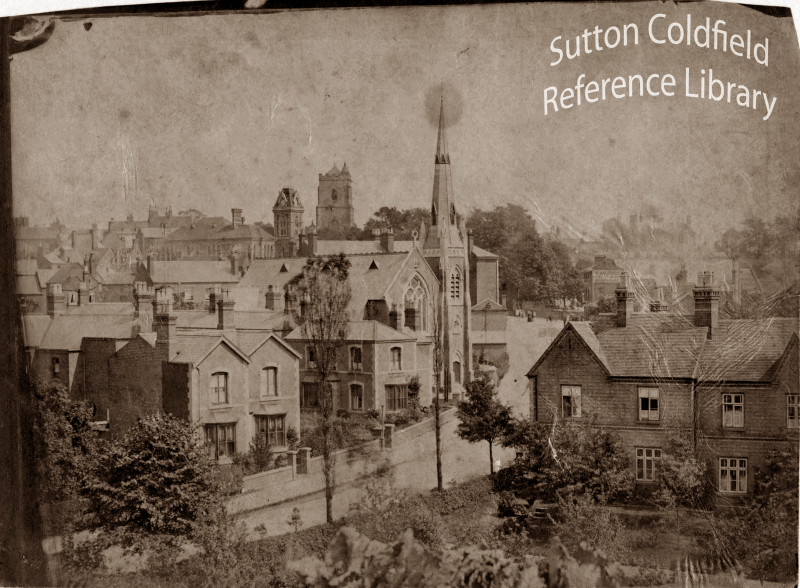Sarah Holbeche noted in her diary “1826. New road to the Park, a great boon, before which the only access was at Doe Bank”. The new road was built as part of an agreement with Sir Edmund Hartopp of Four Oaks Hall known as the Hartopp Exchange, where Hartopp took in 63 acres of Sutton Park to add to his own park at Four Oaks. Because the land Hartopp wanted included valuable woodland at Ladywood it was decreed that he should give 93 acres of land to the Corporation in exchange, including some fields (now known as Meadow Platt) to be added to Sutton Park together with an access road.
Park Road ran across meadow land unsuitable for building, but the field lying between Park Road and the Reddicroft was on rising ground. This five-acre field belonged to F. B. Hackett of Moor Hall, but it was not until the 1850s that it was divided up into 23 plots suitable for building, served by a new road called Hackett Street leading from Park Road near its junction with Mill Street.
The first house to be built in Hackett Street was a big house with a rateable value of £30, for Lorenzo Secker, a solicitor’s clerk. Three workmen’s houses were built on the next door plot, each valued at £12, occupied at the 1861 census by a roadman, a chemist’s shop and a cast steel fork maker. The site of all these houses is now the car park opposite the Station Hotel in Station Road.
Development ceased during the construction of the railway line to Sutton, completed in 1862 with its station at the end of Hackett Street. Building began again, twelve more cottages ranging in value from £6.50 to £9 were built by 1865. More houses, some of very poor quality, were built in the 1870s both in Hackett Street, now renamed Station Street, and in Park Road, despite the poor drainage of the area, where untreated sewage overflowed from Mr. Hayward’s ditch.
Proper sewers were not laid until the 1880s, paving the way for more housing development in Park Road beyond the railway bridge.
